Downloaded 22 times
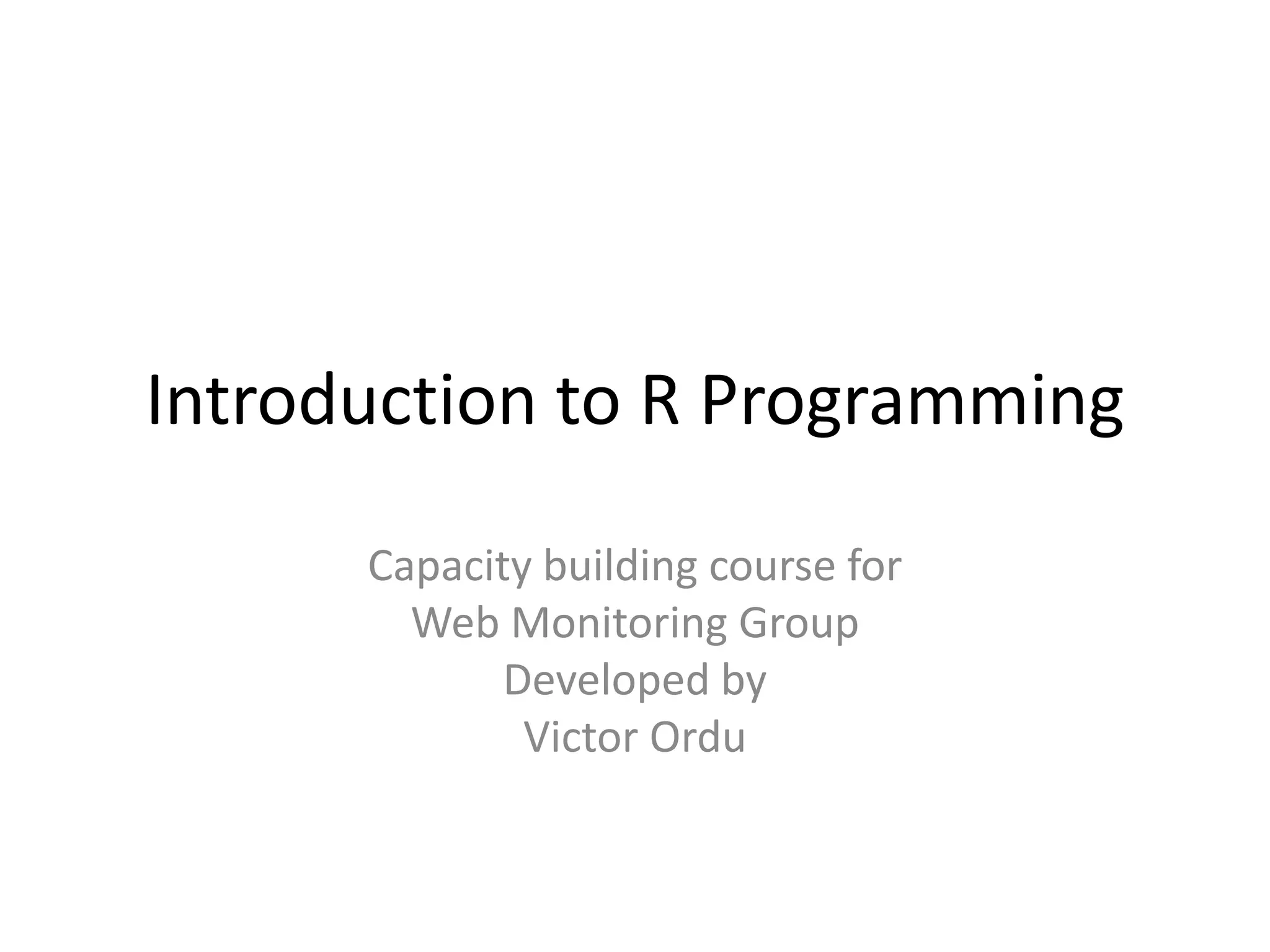
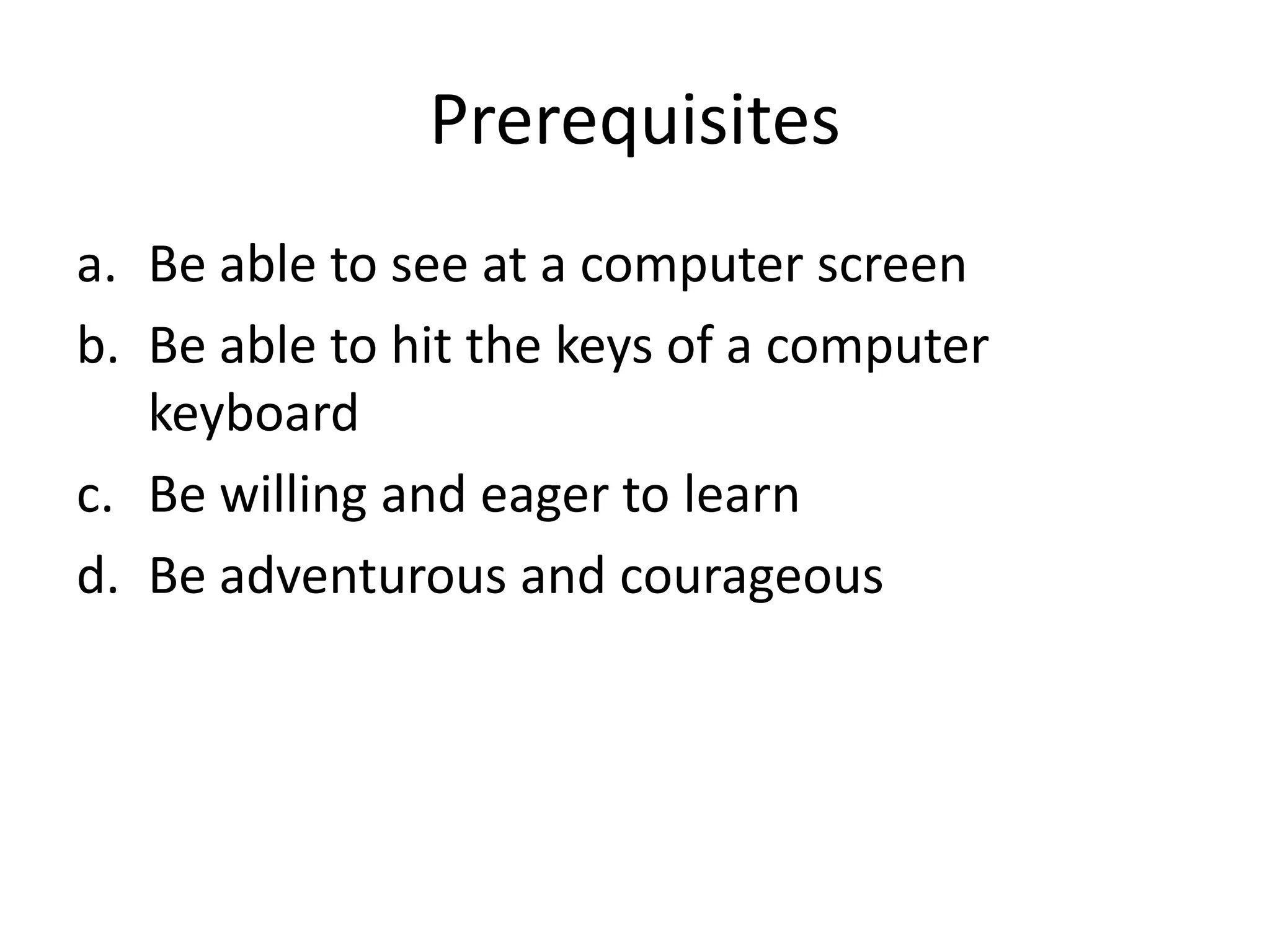
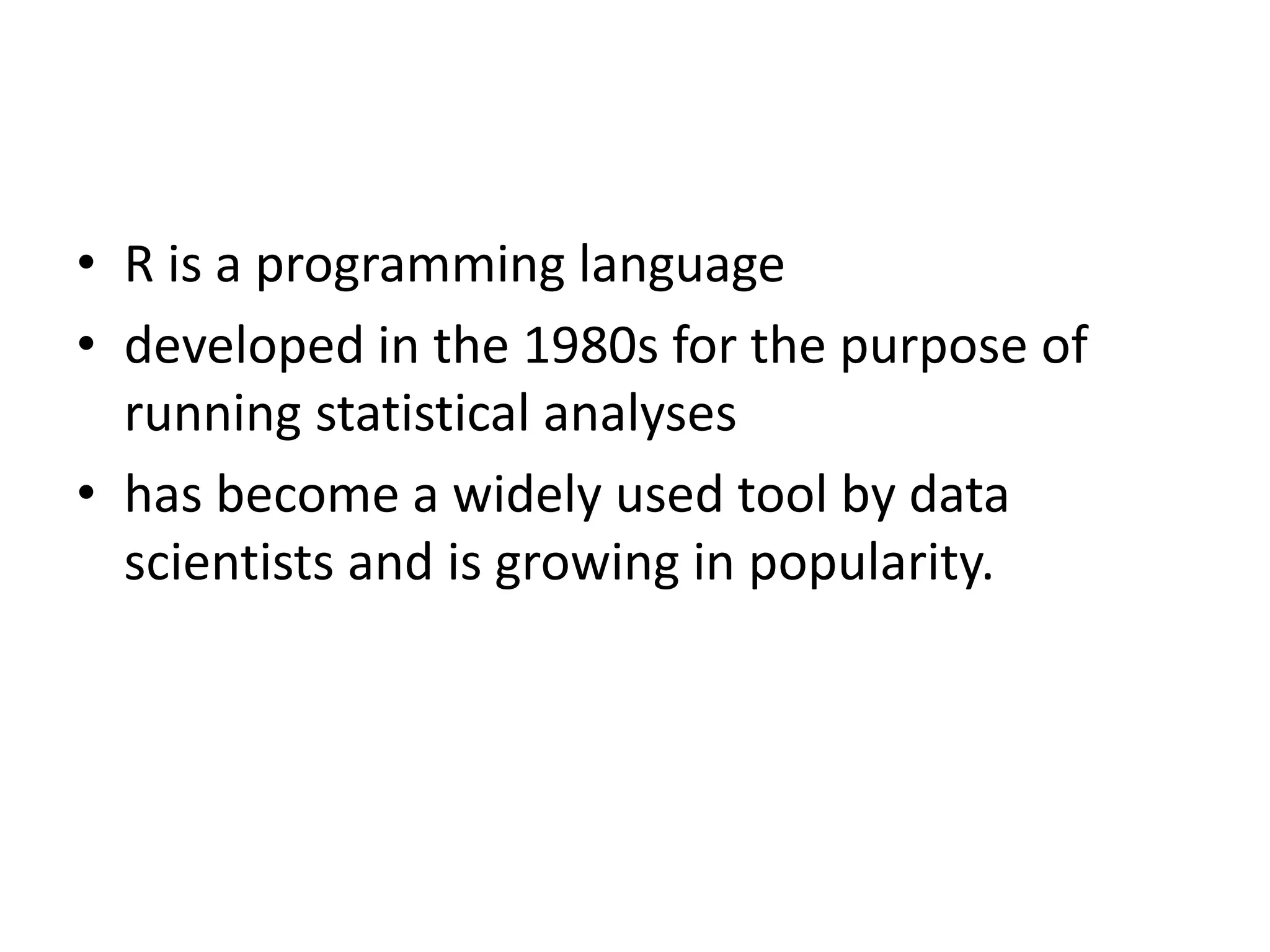
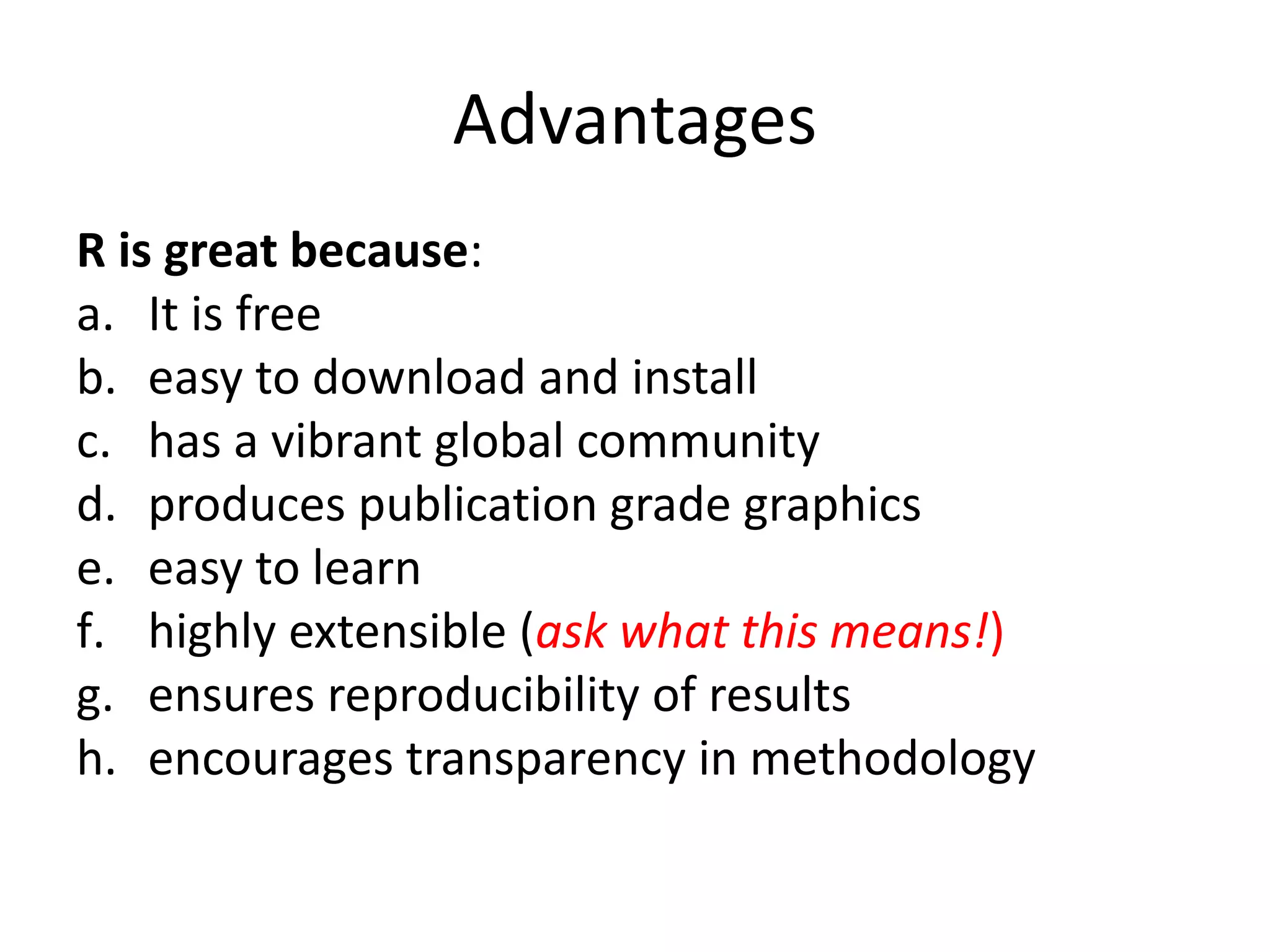
![Disadvantages
R, like everything in life, has its own issues:
a. It has a steep learning curve i.e. difficult to
master
Solution: Practice, practice, practice!
b. It is a quirky language as it is not that
intuitive [e.g. in English – read (present
tense) and read (past tense)]
Solution: More practice!](https://image.slidesharecdn.com/introductiontorprogramming-161118135210/75/Introduction-to-R-programming-5-2048.jpg)
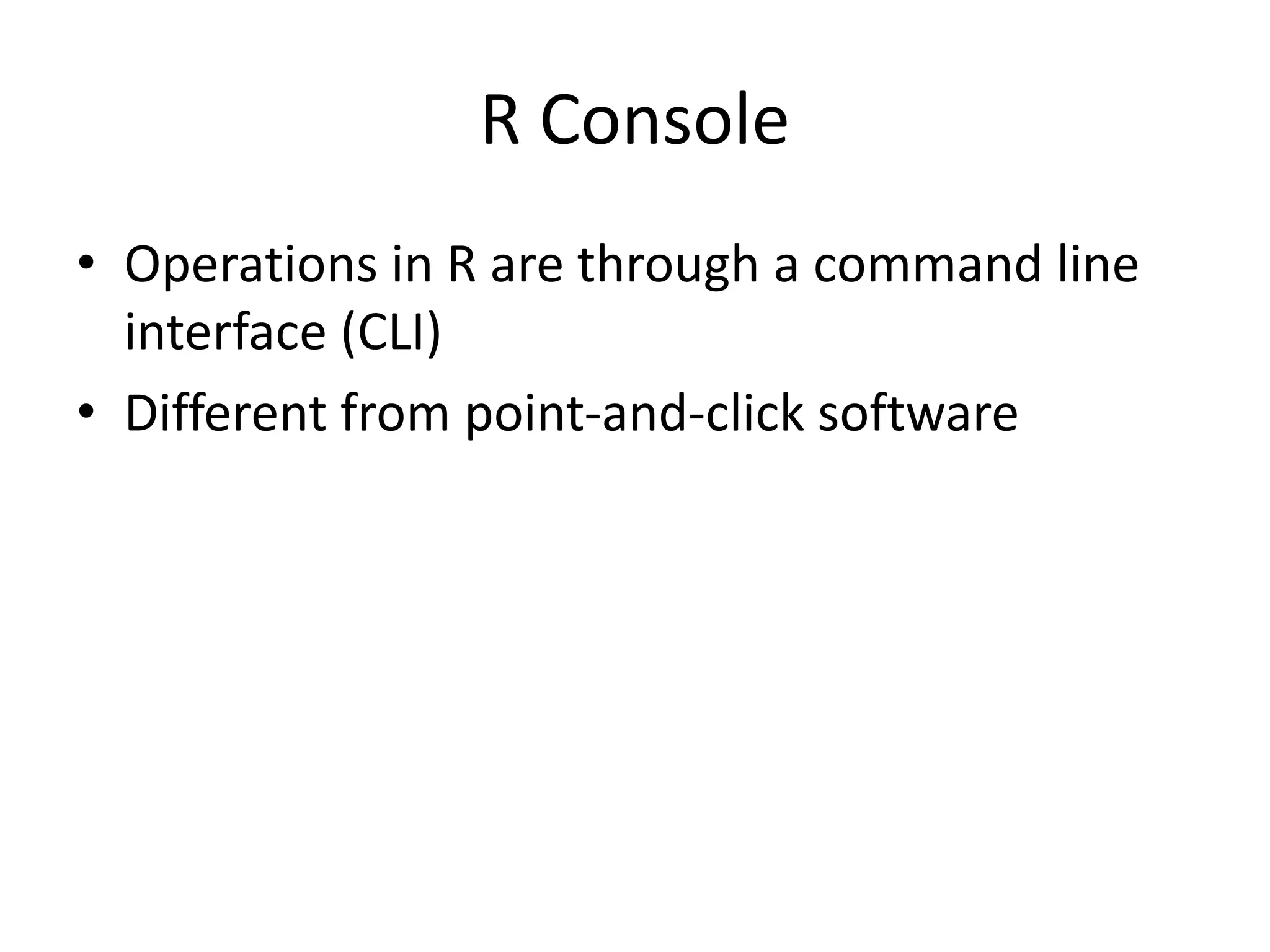
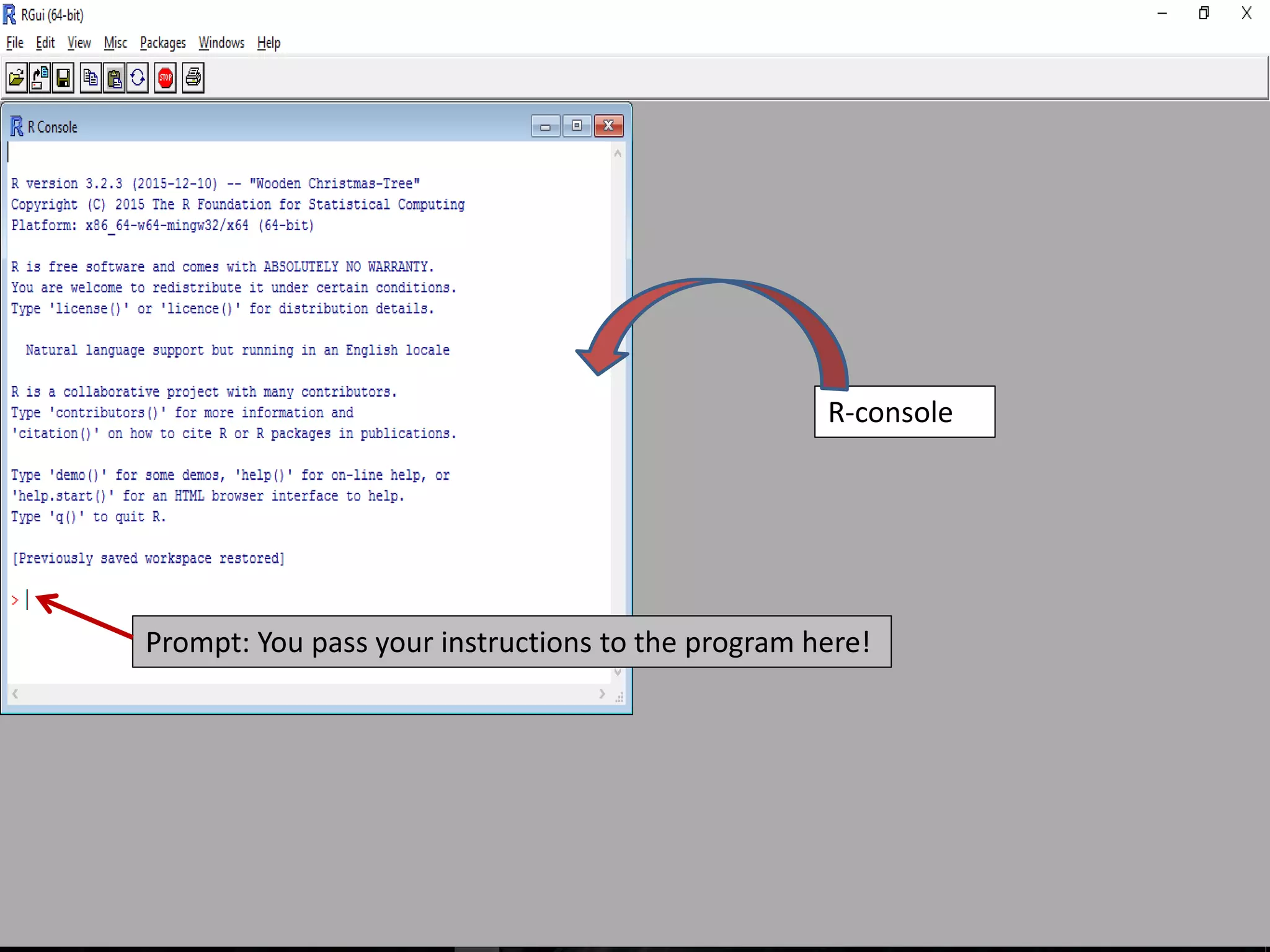
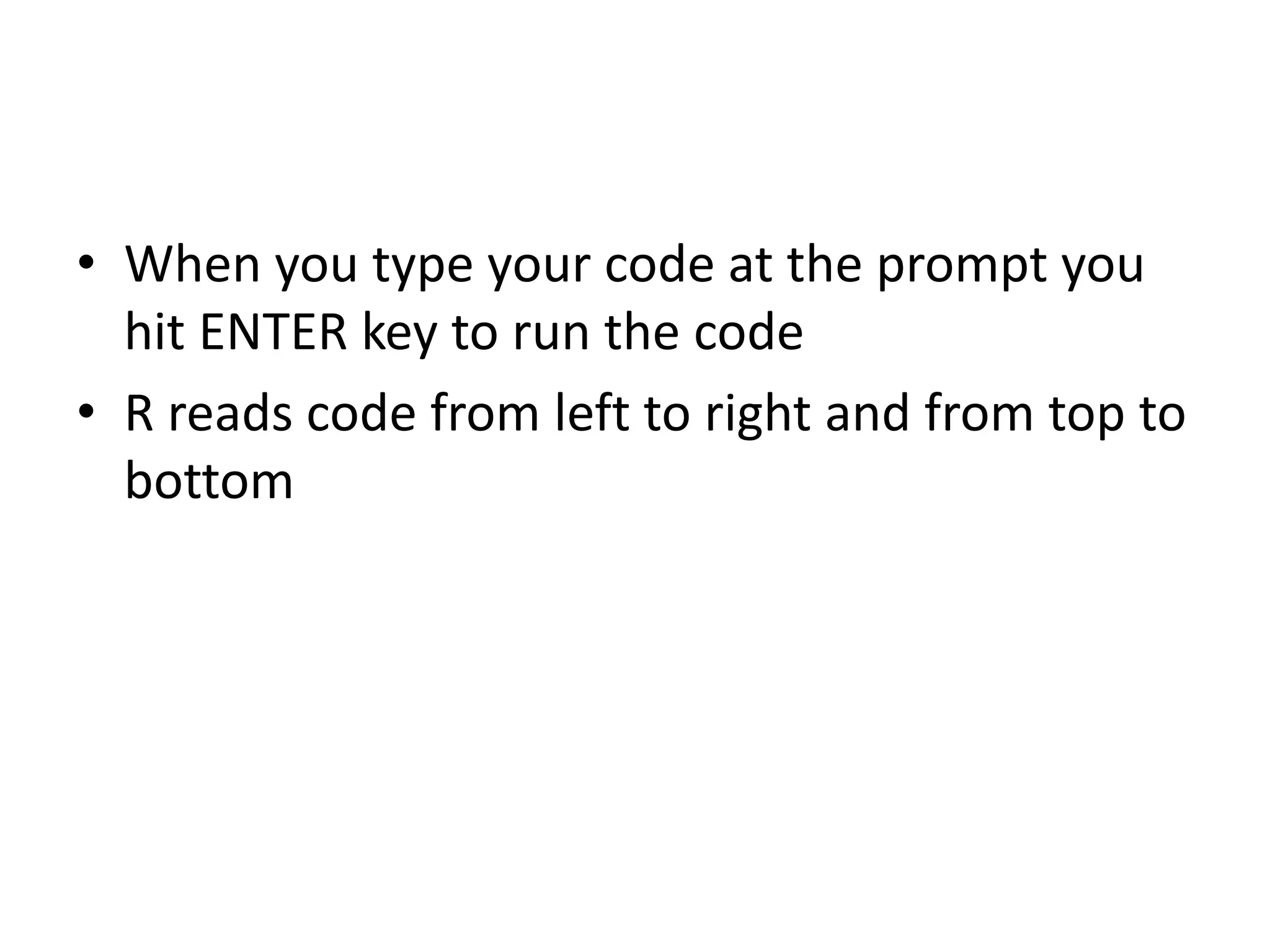
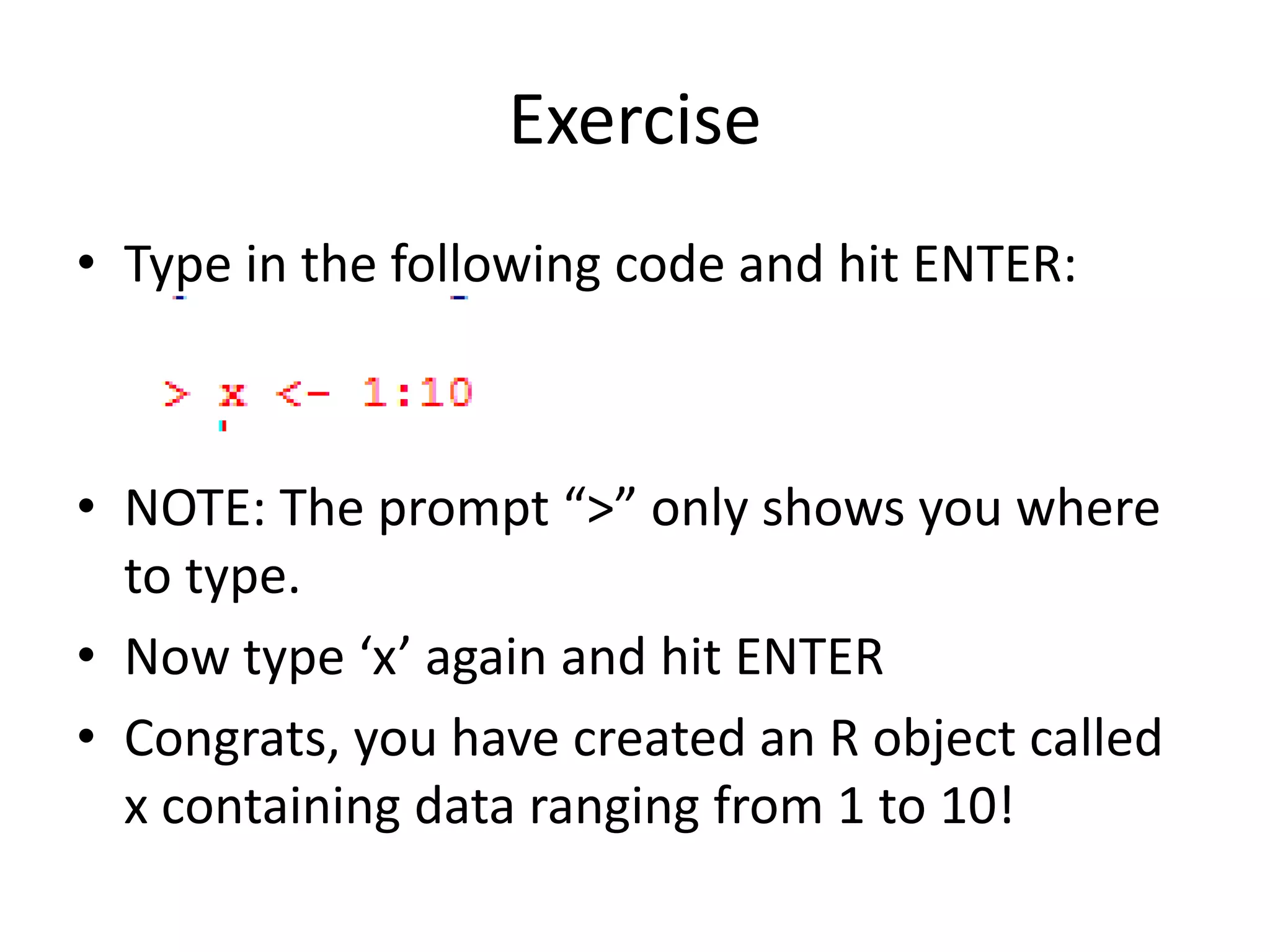
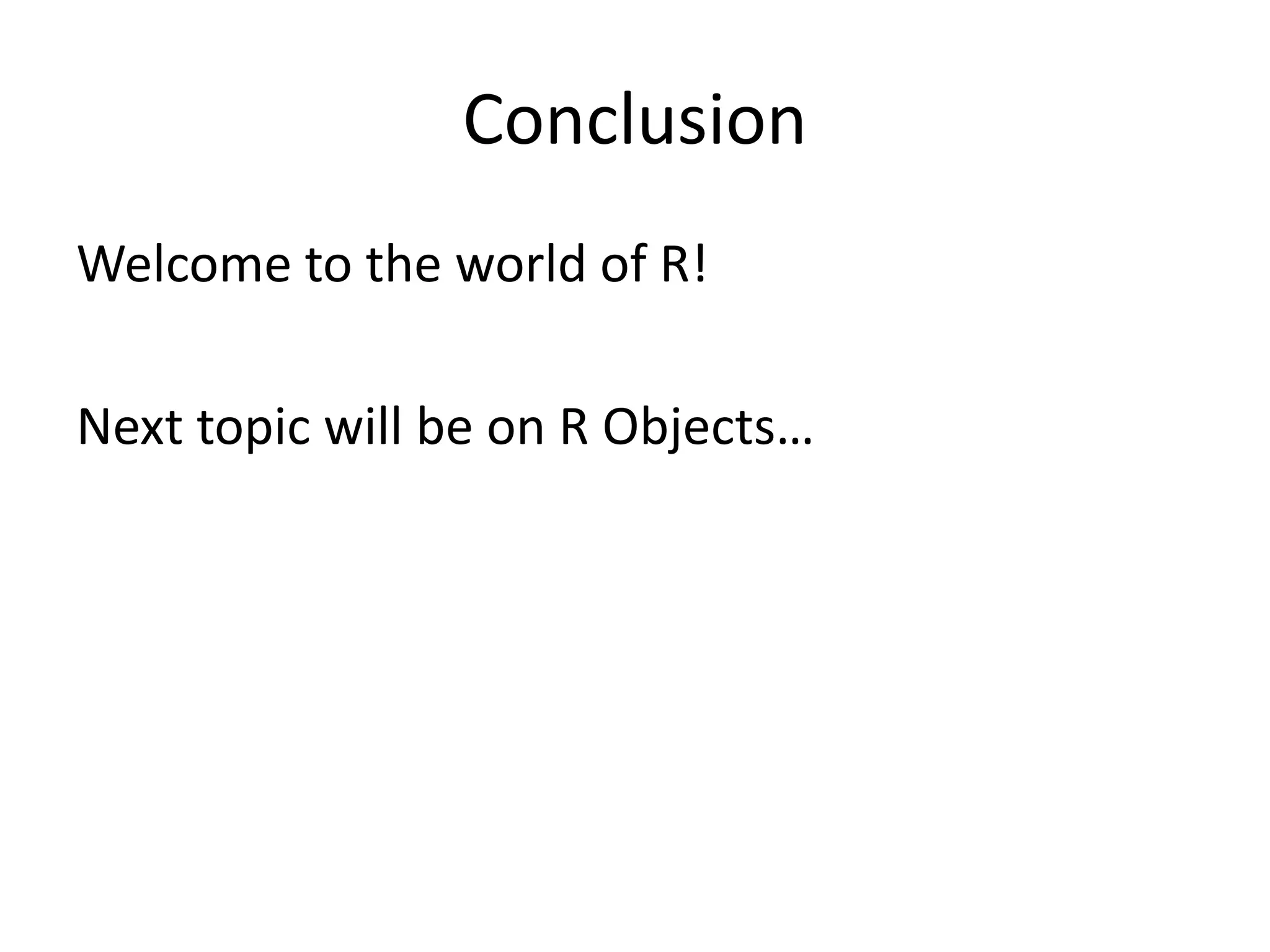

This document outlines an introductory course on R programming for a web monitoring group, highlighting prerequisites such as basic computer skills and a willingness to learn. It discusses the advantages of R, including its cost-effectiveness, ease of installation, and the ability to produce high-quality graphics, while also mentioning challenges like its steep learning curve. The course aims to equip participants with practical skills through exercises in the R console, ultimately welcoming them to the R programming environment.
This slide introduces R Programming as part of a training course for the Web Monitoring Group.
This slide outlines necessary skills for attending the course, emphasizing basic computer abilities and a willingness to learn.
R is a statistical programming language developed in the 1980s, now popular among data scientists.
R is free, easy to install, has a strong community, produces high-quality graphics, and ensures reproducibility.
R has a steep learning curve and quirky syntax; solutions involve consistent practice to overcome these hurdles.
R operates through a command line interface (CLI), differing from standard point-and-click software.
Instructions are entered at the R console prompt where users can execute their commands.
This slide explains the method of typing code in R and how it reads commands in a specific order.
Participants are guided to create an R object by typing a specific code and pressing ENTER.
The presentation concludes with a welcome to R and mentions the upcoming topic on R Objects.




![Disadvantages
R, like everything in life, has its own issues:
a. It has a steep learning curve i.e. difficult to
master
Solution: Practice, practice, practice!
b. It is a quirky language as it is not that
intuitive [e.g. in English – read (present
tense) and read (past tense)]
Solution: More practice!](https://image.slidesharecdn.com/introductiontorprogramming-161118135210/75/Introduction-to-R-programming-5-2048.jpg)




